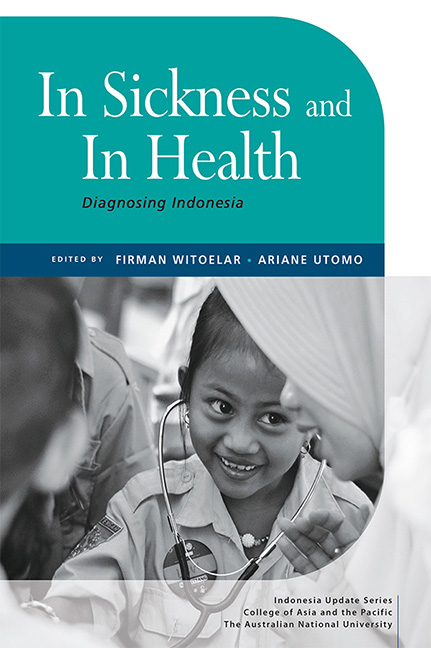1 - Introduction: Diagnosing Indonesia
Published online by Cambridge University Press: 09 January 2024
Summary
Canvassing health transition in Indonesia
In 1950, about 189 out of 1,000 babies born alive in Indonesia would not have survived past their first birthday. Such a high infant mortality rate overwhelmingly contributed to the population’s low life expectancy for the newly independent nation at the time. Assuming the prevailing age-specific patterns of deaths, for the same year, life expectancy at birth was estimated to be 39.4 years. By 2022, Indonesia’s infant mortality rate has fallen to 17.7 deaths per 1,000 live births, and life expectancy at birth has risen to 68.25 years.
If we go by these trends in infant mortality rate and life expectancy, the future trajectory for the general health and wellbeing of the average Indonesian is looking rosy. After all, the two indicators are meant to capture the underlying factors and contexts that shape the health of the nation. At the outset, gains in life expectancy—and correspondingly, the reduction in infant mortality rate—reflect a narrative of improvements in income per capita, living conditions, nutritional intake and education, as well as access to and quality of health care in recent decades. But focusing only on these two broad indicators may also obfuscate the complex history of Indonesia’s health transition, where wins are often coupled with setbacks, and where health-related innovations regularly intersect with novel conundrums.
What do we mean by health transition, and why do we often hear that Indonesia’s health transition has been marked by increasing complexity over time? The term health transition is often used interchangeably with epidemiologic transition. The latter was first conceptualised by Abdel Omran in 1971 to refer to the long-term shifts in the mix of diseases as people live longer through the course of economic development and social change. More specifically, Omran coined the term epidemiologic transition to describe ‘the complex change in patterns of health and disease and on the interactions between these patterns and their demographic, economic and sociological determinants and consequences’ (1971: 510). In the first iteration of the epidemiologic transition theory, Omran proposed that there are three distinct stages in the transition: the age of pestilence and famine, the age of receding pandemics, and the age of degenerative and man-made diseases.
- Type
- Chapter
- Information
- In Sickness and In HealthDiagnosing Indonesia, pp. 1 - 14Publisher: ISEAS–Yusof Ishak InstitutePrint publication year: 2022

